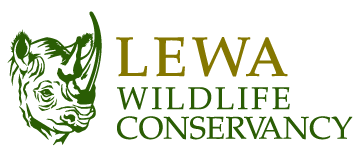A persistent drought has been looming in varying degrees over the past 2 years, necessitating the adoption of a rhino feeding programme. It is a delicate balance between protecting a vulnerable species whilst safeguarding their natural patterns.
Low to No Rainfall
In mid-May, the Lewa Conservation and Research Department made the decision to re-introduce the Emergency Rhino-Feeding Programme, which was paused in November of 2021 at the onset of the short rains. However, these rains were characterized by a late onset, and a lower-than-average volume; making them insufficient for either crop production or forage sustenance.
The situation worsened, subsequently causing an emergency in the Northern part of Kenya, a region that was already in the fourth consecutive season of poor rainfall. The 2022 long rains – typically falling between March and May – were expected to provide some respite, but these too came late, with most of Kenya experiencing depressed levels or none at all.
Impact on Wildlife
Lewa – which lies in the foothills of Mt. Kenya, but also spreads to the relatively semi-arid region extending towards Northern Kenya – has not been spared. Besides a visible reduction in forage on the landscape, a routine assessment by the Lewa Conservation and Research department indicated low scores in the body condition of large foraging species – notably buffaloes, Zebras and rhinos.
The decision to intervene
“We use a body condition score of 1-5, with the ideal score being 3.5 to 5,” Lewa’s Head of Conservation and Research, Dr. Dominic Maringa explains. “If the score is lower than 3.5, we intensify the monitoring. If it drops to lower than 3, then we have to consider intervening. If the drop in the body condition is as a result of forage reduction, intervention means introducing supplementary feeding.”
The decision to feed rhinos is not arrived at lightly. “The bottom line,” Dr. Maringa explains, “is that even without the threat of drought, species such as the Black rhino, for whom the feeding programme is specifically targeted, is critically endangered.”
Restoring and safeguarding a species
In the 1970s, Kenya used to be home to around 20,000 black rhinos. By the late 1980s, this population had been poached to about 350. Guided by a series of national five-year conservation action plans or strategies, the journey to restore this species has been long and resource intensive.
The 2017–2021 National Black Rhino Action Plan set a goal to increase numbers by a minimum 5% in established populations, to reach a national meta-population of 830 black rhinos by 2021, and eventually 2,000 animals residing in their natural habitat.
Today, at 897 (KWS,2021) black rhinos, Kenya is home to about 80% of the black rhino population that is still in the wild. Although the black rhino is listed as critically endangered (i.e. last stop before extinction), monitoring indicates that the population growth is increasing and steady. This delicate but upward trend must be safeguarded.
At Lewa, conservation in general, aims to achieve a balanced diversity of flora and fauna, as measured by species and rangeland health. In periods of unfavorable ecological conditions, the work becomes a delicate balance between sustaining vulnerable species, but at the same time, being conscious of their natural patterns and thus ensuring their habitats are protected and sheltered from adverse ecological upheavals.
The Lewa-Borana landscape is currently home to 255 rhinos (133 black, 122 white) – 14% of the national rhino population. “Safeguarding this population is our responsibility, our mandate,” Dr. Maringa states. “Until there is a regeneration of forage in the landscape, supplementary feeding remains essential.” With the next rainy season expected in November of 2022, the outlook is uncertain and concerning. Essentially, this situation is an illustration of the larger global challenge of shifting climatic conditions and their impact on habitats, on wildlife, and on people.
The feeding programme
Every morning and afternoon, the Lewa research team, aided by a team from the General Security and Logistics Department, load a tractor and pickup truck with bales of hay and lucerne. They then set off into either of the 6 feeding sites that have been established as prime rhino clustering points.
In addition to hay and Lucene, some individual rhinos may require pellets to boost and meet nutritional requirements. “We may also give the occasional Euphorbia,” Dr. Maringa says. Euphorbia Ingens, commonly known as the candelabra, is a succulent tree that can withstand and thrive in severely hot climates. The candelabra produces a toxic milky latex to protect itself from browsers. However, rhinos are immune to the candelabra’s poison, making it a precious supplement during drought. “Inasmuch as they are a delicacy, Euphorbias are obviously not a sustainable source of supplementary feed because, one, it would deplete the tree and two, it would take too long to replace it.”
Who is getting fed?
At the start of the programme, 7 rhinos were selected as prime feeding candidates; targeted because they are lactating or otherwise vulnerable (e.g. elderly). An individual such as Kitui, a 7-year-old black rhino, was orphaned and hand raised since he was a calf. To protect him from territorial conflict with other males, he was released into a significantly larger fenced off area, which was ample for him to roam and feed. With depleted forage, and the fact that he cannot venture outside his territory, Kitui is the proper candidate for the emergency feeding programme.
Other candidates for the feeding programme include, Sonia, Nashami, Samia, Zaria, Zenetoi and Songare – all of whom have calves.
But in spite of targeting this group, 41 other rhinos – 26 black and 15 white – have been observed consuming the supplementary feed. If current weather patterns persist, the number of rhinos meeting their nutritional needs on this feed will rise, so will the need to sustain the feeding programme.
_______________________________________
360 Bales of hay consumed per week
54 Bales of lucerne consumed per week
USD 4 will purchase a bale of hay
USD 5 will purchase a bale of lucerne
USD 10,000 per month
Cost of sustaining the emergency feeding programme







